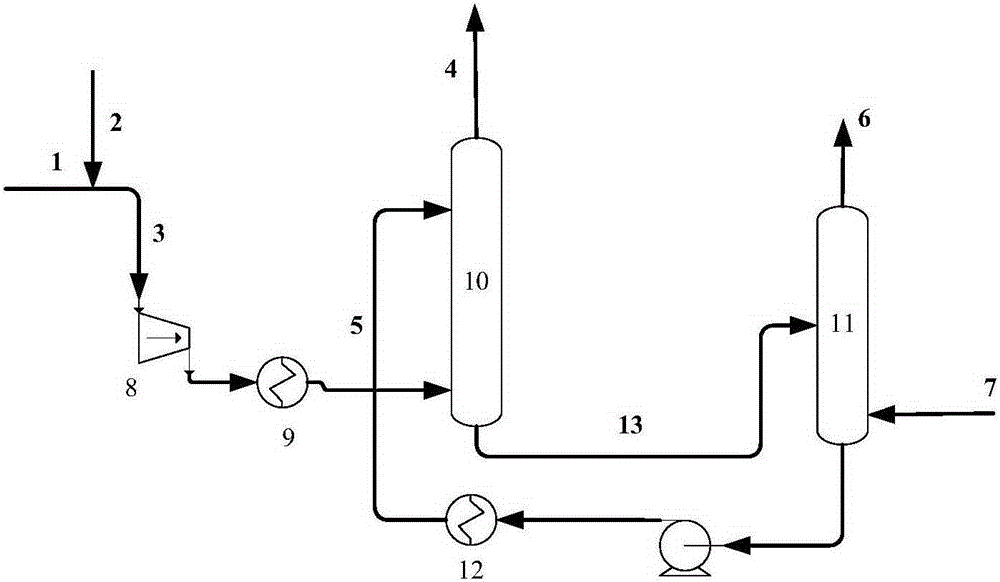Method for removing oxygen from oxygen-containing light hydrocarbons
A light hydrocarbon and oxygen technology, which is applied in the processing of gas mixtures, hydrocarbon oil, petroleum industry, etc., can solve the problems of light hydrocarbon gas loss of deoxygenation capacity, high cost of catalyst, etc., to reduce investment and consumption, simple process, improve Effect of deoxygenation capacity
- Summary
- Abstract
- Description
- Claims
- Application Information
AI Technical Summary
Problems solved by technology
Method used
Image
Examples
Embodiment 1
[0045] This example is used to illustrate the method for deoxygenating oxygen-containing light hydrocarbons of the present invention.
[0046] This example deals with the oxygen-containing light hydrocarbon gas produced by the hydrogen peroxide process propylene oxide industrial plant, and the compositions of the oxygen-containing light hydrocarbon gas and absorbent are shown in Table 1.
[0047] Table 1
[0048] Mass composition (weight%) Oxygenated light hydrocarbon gas absorbent Nitrogen 0.24 - oxygen 4.34 - carbon dioxide 0.48 - ethane 14.58 - Vinyl 56.78 - propane 5.37 - Propylene 18.15 - n-butane 0.06 - n-Hexane - 0.03 n-heptane - 14.45 n-octane - 14.42 n-nonane - 1.71 Cyclohexane - 0.01 Ethylcyclopentane - 0.79 Cyclooctane - 0.87 1-Hexene - 0.01 1-heptene - 1.24 1-octene - 1.11 benzene - 0.44 toluene - 64.81 p-xyle...
Embodiment 2
[0053] This example is used to illustrate the method for deoxygenating oxygen-containing light hydrocarbons of the present invention.
[0054] This example deals with the oxygen-containing light hydrocarbon gas produced by the hydrogen peroxide process propylene oxide industrial plant, and the compositions of the oxygen-containing light hydrocarbon gas and absorbent are shown in Table 3.
[0055] table 3
[0056] Mass composition (%) Oxygenated light hydrocarbon gas absorbent Nitrogen 0.24 - oxygen 3.21 - carbon dioxide 0.31 - Methanol 1.33 - propane 1.91 0.01 Propylene 92.94 0.29 n-butane 0.06 - n-Hexane - - n-heptane - 39.83 n-octane - 8.93 n-nonane - 1.04 Cyclohexane - - Ethylcyclopentane - 0.89 Cyclooctane - 0.53 1-Hexene - - 1-heptene - 6.24 1-octene - 0.68 benzene - - toluene - 41.57 p-xylene - 0.07
[0057] use as ...
PUM
 Login to View More
Login to View More Abstract
Description
Claims
Application Information
 Login to View More
Login to View More - R&D
- Intellectual Property
- Life Sciences
- Materials
- Tech Scout
- Unparalleled Data Quality
- Higher Quality Content
- 60% Fewer Hallucinations
Browse by: Latest US Patents, China's latest patents, Technical Efficacy Thesaurus, Application Domain, Technology Topic, Popular Technical Reports.
© 2025 PatSnap. All rights reserved.Legal|Privacy policy|Modern Slavery Act Transparency Statement|Sitemap|About US| Contact US: help@patsnap.com

